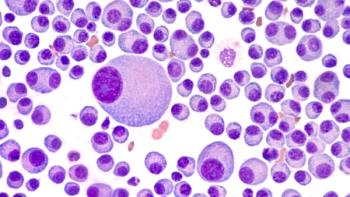
Coinfection with HIV-Hepatitis C Can Increase Cancer Risk
Coinfection with HIV plus a hepatitis B, C, or both, adds to the risk of non-Hodgkins lymphoma.
People who have HIV are at higher risk of getting lymphoma, about 100 times greater than the general population, a recent study suggests. Even after they get antiretroviral therapy, people who are HIV positive have a 10-fold higher risk of lymphoma.
A new study from Europe found that having HIV, plus a hepatitis virus (B, C, or both), further adds to the risk of lymphoma, specifically non-Hodgkin’s lymphoma (NHL).
But in a puzzling finding, the researchers learned that these HIV positive coinfected patients do not have an increased NHL risk when coinfected with hepatitis unless they are getting antiretroviral therapy.
Reporting in Annals of Internal Medicine , Andrea De Luca, MD and colleagues from the Collaboration of Observational HIV Epidemiological Research Europe (COHERE) group did a cohort study based on medical records from more than 50,000 patients. The group all had HIV plus chronic hepatitis B virus (HBV) or hepatitis C virus (HCV).
All patients in the study were treatment naïve for HIV. There were 1339 patients with HBV and 7508 with HCV, of whom 210 had both viruses.
The researchers found that ART-treated patients with chronic HBV or HCV infection were at increased risk for NHL. The hazard ratios for NHL with HBV and HCV infection were 1.33 and 0.67, respectively, in patients who had not started ART.
In patients who did start ART for their HIV infections, the hazard ratios were 1.74 for HBV and 1.73 for HCV.
“Estimates in ART-naïve patients were less certain, possibly due to the lower number of events, limited follow-up due to some patients initiating ART or other unmeasured competing factors masking the effects of chronic HBV and HCV infection,” the authors wrote.
Early diagnosis and treatment of HIV infection in conjunction with routine screening for chronic HBV and HCV infection is essential to decrease NHL morbidity and mortality in HIV infected persons, the team concluded.
In an accompanying editorial, Charles Rabkin, MD and James Goedert, MD of the National Cancer Institute in Bethesda, MD said "this study highlights the urgent need to prevent HCV and HBV infection in people living with HIV and to treat those who are coinfected."
Newsletter
Stay informed on drug updates, treatment guidelines, and pharmacy practice trends—subscribe to Pharmacy Times for weekly clinical insights.




















































































































































































































